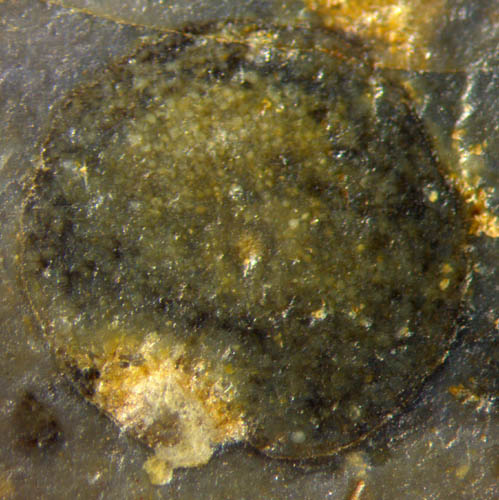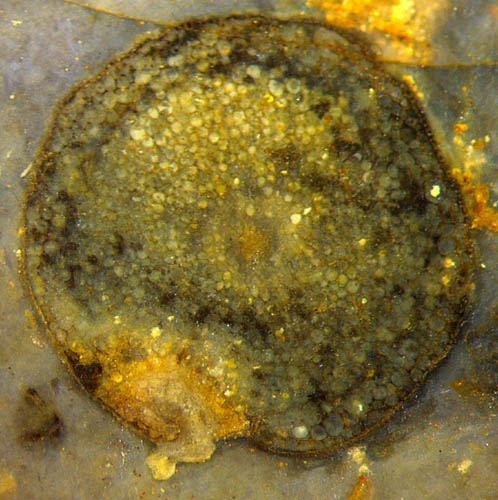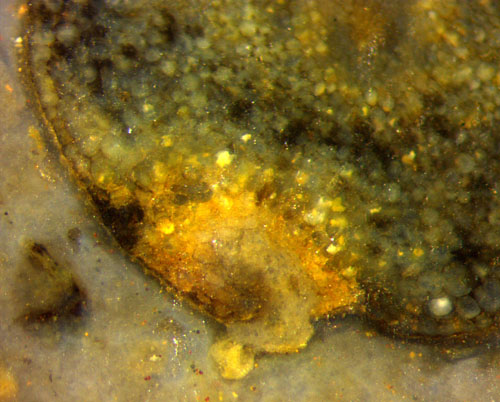Rhynia
twice affected
Cells with dark fills loosely
arranged in a concentric circle are occasionally seen on cross-sections
of Aglaophyton,
less often on those of Rhynia.
The dark fills are tangles of fungus hyphae able to penetrate the cell
walls [1]. The fungus is assumed to live inside the plant for mutual
benefit
[2].
The
circle of dark dots is seen to be strongly deformed here.
In the upper part of the picture it keeps near the circular boundary
but in the lower part it is deranged and shifted inward. Obviously the
shift is related to the affected area below.
Highly peculiar is the rupture of the epidermis with something creeping
or growing out.


Figs.1,2: Rhynia
cross-section twice
affected as seen
on the raw surface of a Rhynie
chert sample, dry (Fig.1) and wet (Fig.2): dark cells due to the
symbiotic fungus Glomites,
enigmatic local parasite effect below.
Image width 3mm.
Fig.3 (below): Detail of the Rhynia
cross-section in Fig.2, with
ruptured epidermis and something creeping or growing out.
Image width 2mm.

Something
has come out through the ruptured epidermis and cuticle and has
formed a kind of small scab, similar as the small black scabs
occasionally appearing on Aglaophyton.
There are obvious differences, though: The scabs on Aglaophyton
apparently did not interfere with the ring of dark dots in the tissue.
What had been the cause of the scab presented
here had affected a larger area of tissue, and it must have done so at
an early time when the dark cell fills by Glomites had not
yet been there. Obviously the later appearing Glomites avoided
the yellow area affected by some parasite and placed its dark tangles
in cells at some distance.
It may be mentioned here
that the diameter of Rhynia
is rather
large in this sample:
2.8mm. Possible confusion with Aglaophyton
seems to be
excluded by the presence of the typical
warts
on the surface of Rhynia
(not pictured here),
which are abundant on some samples but rare
or absent (?) on others.
Sample: Rh7/57 (0.27kg), found in 2003.
H.-J.
Weiss 2021
[1] T.N. Taylor et al.: Fossil arbuscular
mycorrhizae from the Early Devonian,
Mycologia 87(1995),
560-73.
[2] I. V.
Karatygin, N. S. Snigirevskaya, K. N Demchenko:
Species of the genus
Glomites
as plant symbionts in Early
Devonian ecosystems.
Paleontological
J. 40(2006), 572-579.
 |
 |
188 |






